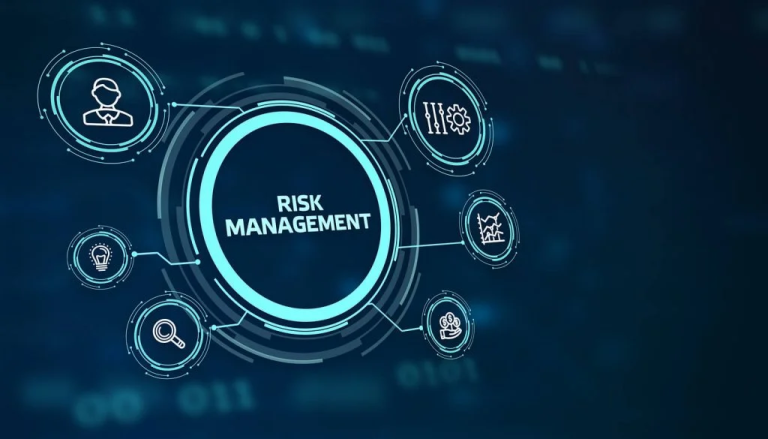
Exploring Blockchain’s Use for Intellectual Property Rights Protection in Commerce
In the digital age, protecting intellectual property (IP) rights is a critical concern for creators and businesses. Blockchain technology has emerged as a powerful tool for enhancing IP rights protection in commerce. This article delves into the applications of blockchain in safeguarding intellectual property, providing insights into its benefits, challenges, and future potential.
Introduction
Intellectual property rights, which encompass copyrights, trademarks, patents, and trade secrets, are valuable assets in the commerce landscape. Blockchain technology offers new possibilities for protecting and managing these rights in a secure, transparent, and efficient manner.
Understanding Intellectual Property Rights
- Copyrights: Protect original works of authorship, such as books, music, art, and software.
- Trademarks: Safeguard brand names, logos, and symbols that distinguish goods and services.
- Patents: Grant exclusive rights to inventors for new inventions and technological advancements.
- Trade Secrets: Protect confidential business information, formulas, and processes that provide a competitive advantage.
The Role of Blockchain in IP Rights Protection

– Immutable and Transparent Recordkeeping
Blockchain provides an immutable and transparent ledger for recording and storing IP-related information, including creation dates, ownership details, and digital content.
- Blockchain as a Distributed Ledger: Every transaction and update related to IP rights is recorded in a decentralized manner, making it tamper-proof and resistant to fraud.
- Smart Contracts for IP Transactions: Smart contracts can automate and enforce IP-related agreements, ensuring compliance and streamlining the transfer of rights.
– Timestamping and Proof of Existence
Blockchain allows for the secure timestamping and proof of existence for creative works, establishing their priority and authenticity.
- Copyright Timestamping: Creators can timestamp their work on the blockchain, providing proof of its existence at a specific point in time.
- Patent Prior Art: Blockchain-based timestamping can establish prior art, helping inventors prove the novelty and non-obviousness of their inventions.
– Digital Rights Management
Blockchain technology enables robust digital rights management (DRM) systems, facilitating the control, licensing, and protection of digital assets.
- Ownership and Licensing Information: Blockchain can store ownership and licensing details, ensuring transparency and facilitating efficient IP rights management.
- Micropayments and Royalties: Smart contracts can automate micropayments and royalty distributions, enabling seamless and transparent compensation for creators.
Benefits of Blockchain for IP Rights Protection
– Enhanced Security and Anti-Counterfeiting Measures
Blockchain bolsters security measures and combats counterfeiting by providing an incorruptible and transparent record of ownership and transactions.
- Immutable Ownership Records: Blockchain ensures that ownership records cannot be altered, providing a trustworthy source of truth for IP rights.
- Anti-Counterfeiting Solutions: By linking physical products to digital certificates on the blockchain, consumers can verify the authenticity of goods, reducing the risk of counterfeit products.
– Streamlined Licensing and Royalty Payments
Blockchain streamlines the licensing and royalty payment processes, benefiting both creators and licensees.
- Smart Contract Licensing: Blockchain-based smart contracts automate licensing agreements, ensuring compliance and facilitating instant transactions.
- Transparent Royalty Payments: Blockchain enables transparent tracking and distribution of royalty payments, reducing disputes and ensuring fair compensation for creators.
– Global Collaboration and Attribution Tracking
Blockchain facilitates global collaboration, attribution tracking, and the protection of creator rights.
- Collaborative Workflows: Blockchain platforms enable secure collaboration among creators, ensuring proper attribution and protecting joint IP rights.
- Attribution and Plagiarism Detection: Blockchain-based systems can track the origin and usage of creative works, making it easier to detect and address plagiarism and unauthorized usage.
Challenges and Considerations
– Scalability and Performance
Ensuring scalability and high-performance blockchain solutions is crucial for handling large-scale IP rights transactions and enforcement.
- Network Throughput: Blockchain networks must be capable of processing a significant volume of transactions to accommodate the demands of IP rights protection.
- Scalability Solutions: Layer 2 protocols and advancements in blockchain technology, such as sharding and sidechains, can address scalability challenges.
– Privacy and Confidentiality
Balancing privacy and confidentiality while maintaining transparency poses challenges in blockchain-based IP rights protection.
- Pseudonymity: Blockchain can provide pseudonymous identities to protect the privacy of creators while preserving the transparency of ownership records.
- Off-Chain Data Storage: Sensitive IP-related data can be stored off-chain, with blockchain serving as a secure and auditable reference to access and verify the information.
– Interoperability and Standardization
Interoperability and standardization across blockchain networks are essential to ensure seamless collaboration and data exchange in IP rights protection.
- Interoperable Protocols: Developing interoperable protocols and frameworks that enable different blockchain networks to communicate and share IP-related data.
- Standardization of Metadata and Attributes: Establishing common standards for IP-related metadata, such as file formats, licensing information, and attribution details, to ensure compatibility and uniformity.
Future Potential and Innovation
The future of blockchain in IP rights protection holds great potential for innovation and transformative change.
- Decentralized IP Marketplaces: Blockchain can enable peer-to-peer IP marketplaces, facilitating direct transactions between creators and buyers while ensuring authenticity and proper compensation.
- AI and Blockchain Integration: The integration of artificial intelligence (AI) and machine learning with blockchain technology can enhance IP rights enforcement, detection of infringements, and content recognition.
Blockchain-Based IP Dispute Resolution
Blockchain technology can facilitate efficient and transparent resolution of intellectual property disputes. Consider the following:
- Smart Contracts for Dispute Resolution: Smart contracts can be utilized to automate the resolution process, ensuring that the outcome is based on predefined conditions and eliminating the need for intermediaries.
- Immutable Evidence Storage: Blockchain can serve as a secure and tamper-proof repository for storing evidence related to IP disputes, ensuring transparency and facilitating fair judgments.
Tokenization of Intellectual Property Assets
Blockchain enables the tokenization of intellectual property assets, providing fractional ownership and liquidity. Consider the following aspects:
- IP Asset Fractionalization: Blockchain allows for the division of IP assets into tokens, enabling multiple investors to own fractional shares and participate in the potential value appreciation.
- IP Asset Exchange Platforms: Blockchain-based platforms can facilitate the trading and exchange of IP asset tokens, creating a marketplace for investors and increasing liquidity in the IP market.
Enhanced Copyright Protection and Attribution
Blockchain technology can enhance copyright protection and attribution for creators. Consider the following:
- Digital Rights Management: Blockchain enables the management and protection of digital content by associating copyrights with unique digital tokens, ensuring proper attribution and tracking of usage rights.
- Timestamping Creative Works: Creators can timestamp their work on the blockchain, establishing a clear timeline of creation and providing evidence of ownership in copyright disputes.
Licensing Verification and Transparency
Blockchain-based systems provide transparent and verifiable licensing information for intellectual property. Consider the following points:
- License Validation: Licensees can easily verify the authenticity and validity of licenses by accessing blockchain records, reducing the risk of unauthorized usage and infringement.
- Transparent Licensing Transactions: Blockchain facilitates transparent and auditable licensing transactions, allowing creators and licensees to track and record license agreements securely.
Blockchain-Based IP Marketplaces and Crowdfunding Platforms
Blockchain enables the creation of decentralized IP marketplaces and crowdfunding platforms. Consider the following:
- Peer-to-Peer Transactions: Blockchain eliminates intermediaries, allowing creators to directly engage with buyers, investors, and supporters, reducing costs and enhancing efficiency.
- Tokenized Crowdfunding: Blockchain-based crowdfunding platforms can leverage tokens to enable fractional ownership and crowdfunding campaigns for IP projects, democratizing access to investment opportunities.
Integration with AI and Machine Learning
Integrating blockchain with AI and machine learning technologies can further enhance intellectual property rights protection. Consider the following:
- Automated IP Infringement Detection: AI algorithms can analyze content and compare it against registered IP rights on the blockchain, detecting potential infringements and assisting in enforcement efforts.
- Content Recognition and Copyright Compliance: AI-powered content recognition systems can identify copyrighted material on various platforms, ensuring compliance and reducing unauthorized usage.
Transparency in Royalty Payments and Revenue Sharing
Blockchain technology enhances transparency in royalty payments and revenue sharing for creators and rights holders. Consider the following:
- Smart Contract Royalty Distribution: Smart contracts can automatically calculate and distribute royalties based on predefined terms and conditions, ensuring accurate and transparent payments.
- Real-Time Revenue Tracking: Blockchain-based systems can provide real-time visibility into revenue generated from the usage of intellectual property, allowing for accurate monitoring and auditing of royalty payments.
Blockchain-Based Proof of Authenticity and Ownership
Blockchain enables a reliable proof of authenticity and ownership for intellectual property assets. Consider the following aspects:
- Unique Digital Certificates: Intellectual property assets can be associated with unique digital certificates on the blockchain, providing a tamper-proof record of their authenticity and ownership.
- Trustless Verification: Anyone can independently verify the authenticity and ownership of an intellectual property asset by accessing the blockchain records, eliminating the need for intermediaries.
Smart Contracts for IP Licensing and Usage Terms
Smart contracts streamline IP licensing and usage agreements, providing automated enforcement and compliance. Consider the following:
- Automated License Execution: Smart contracts can automatically execute licensing agreements once predefined conditions are met, ensuring compliance and eliminating manual processes.
- Usage Tracking and Control: Blockchain-based systems can track and control the usage of intellectual property assets according to the terms specified in smart contracts, ensuring proper enforcement and fair compensation.
Conclusion
Blockchain technology presents exciting opportunities for enhancing intellectual property rights protection in commerce. By leveraging its immutability, transparency, and automation capabilities, blockchain can address challenges related to security, licensing, attribution, and global collaboration. However, scalability, privacy, interoperability, and standardization remain key areas that require further attention. Embracing blockchain’s potential and overcoming these challenges will pave the way for a more secure, efficient, and transparent IP rights ecosystem.
Victoria spent the last year and a half I have been working for coinjet.info, a cryptocurrency news site, covering all breaking news content.


